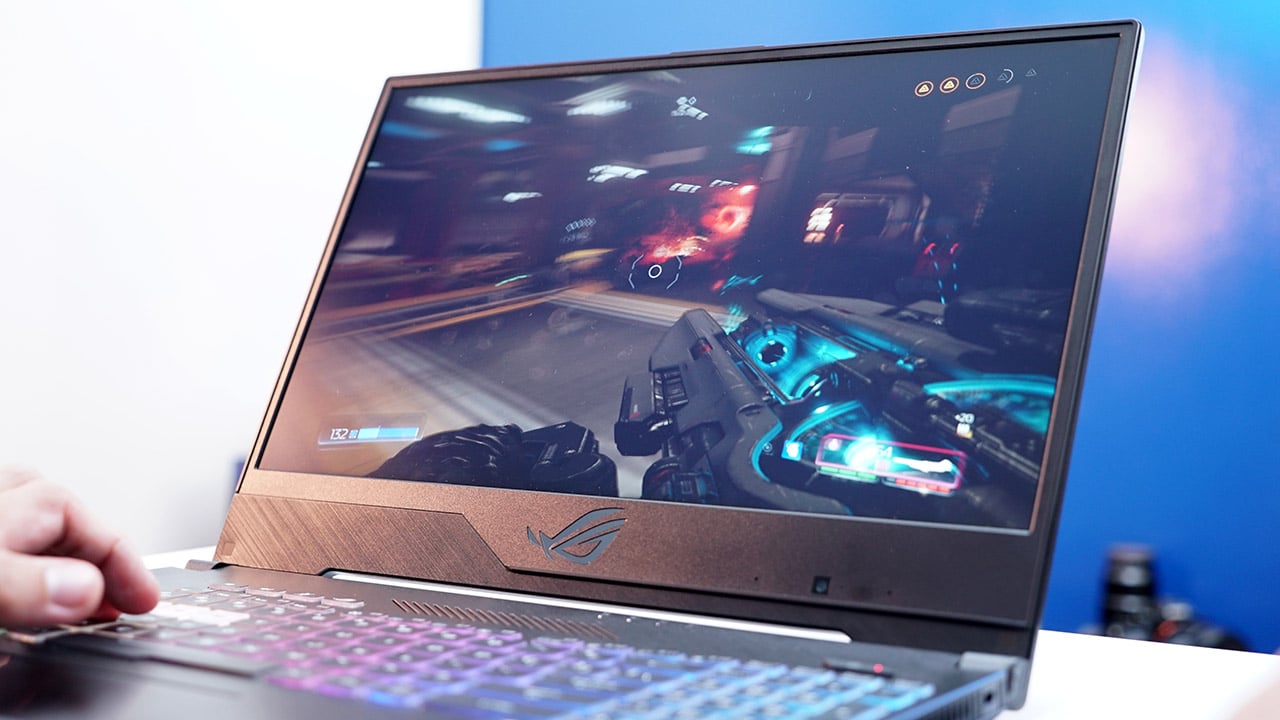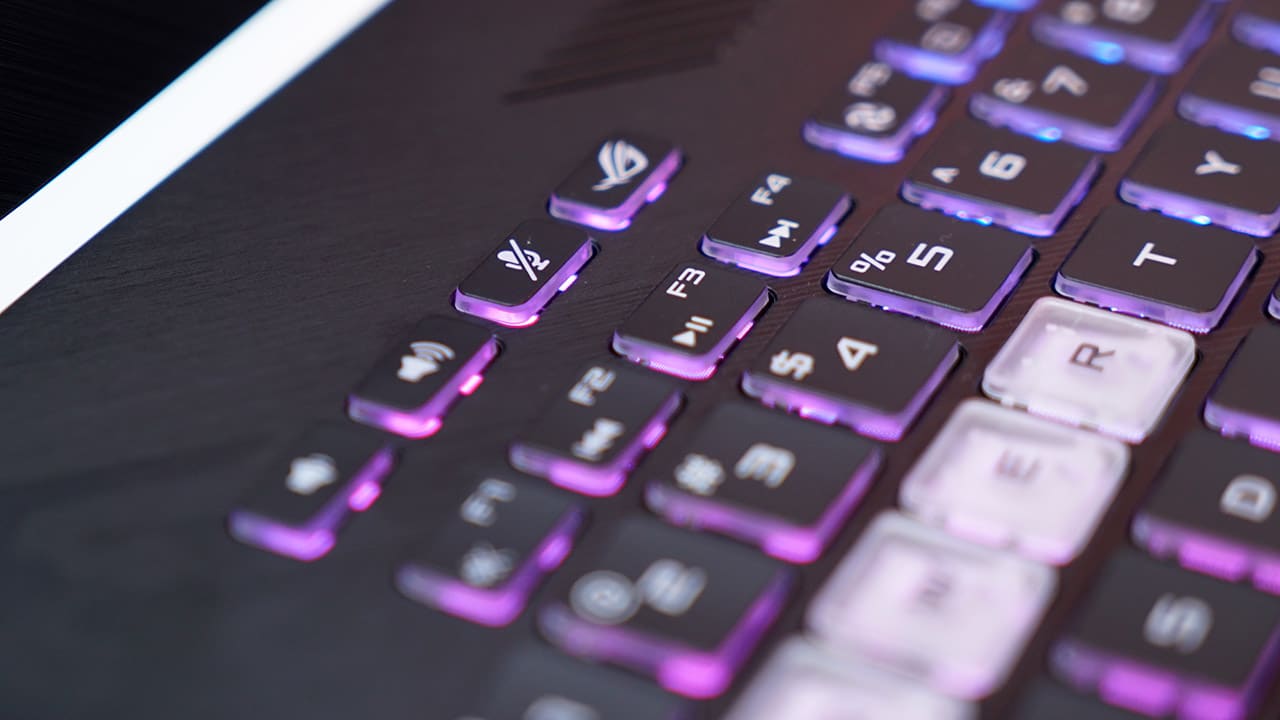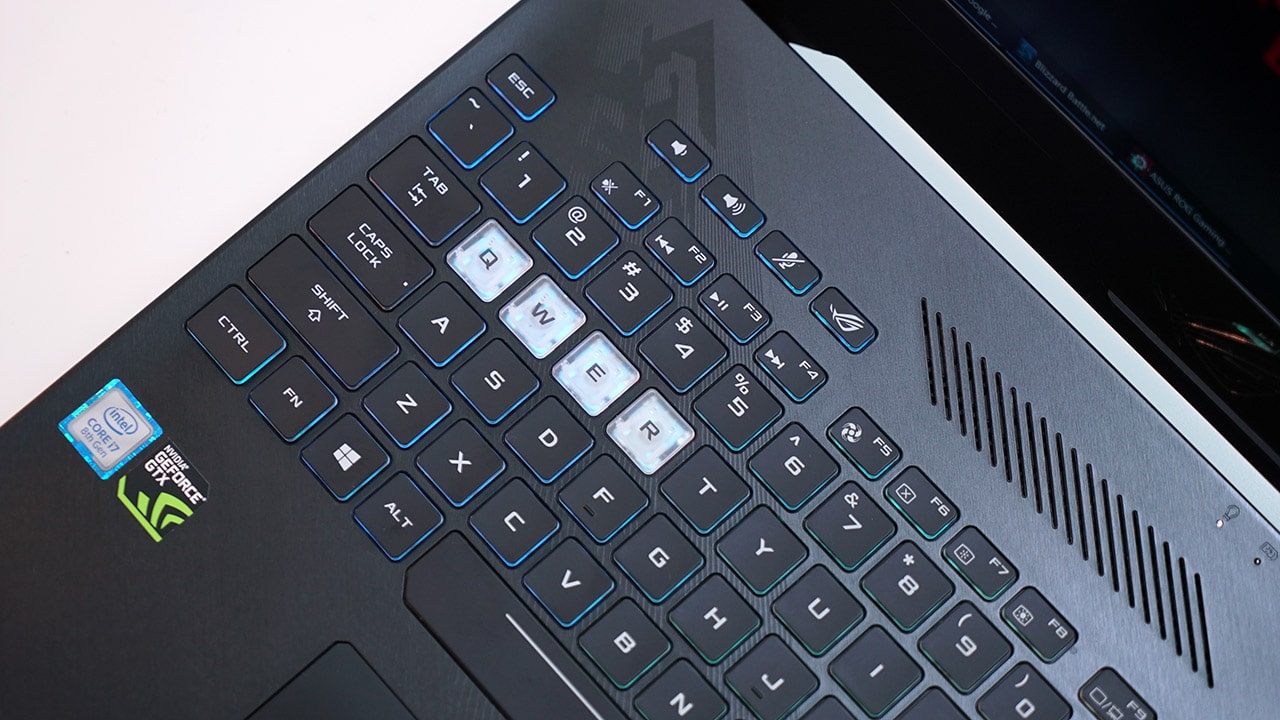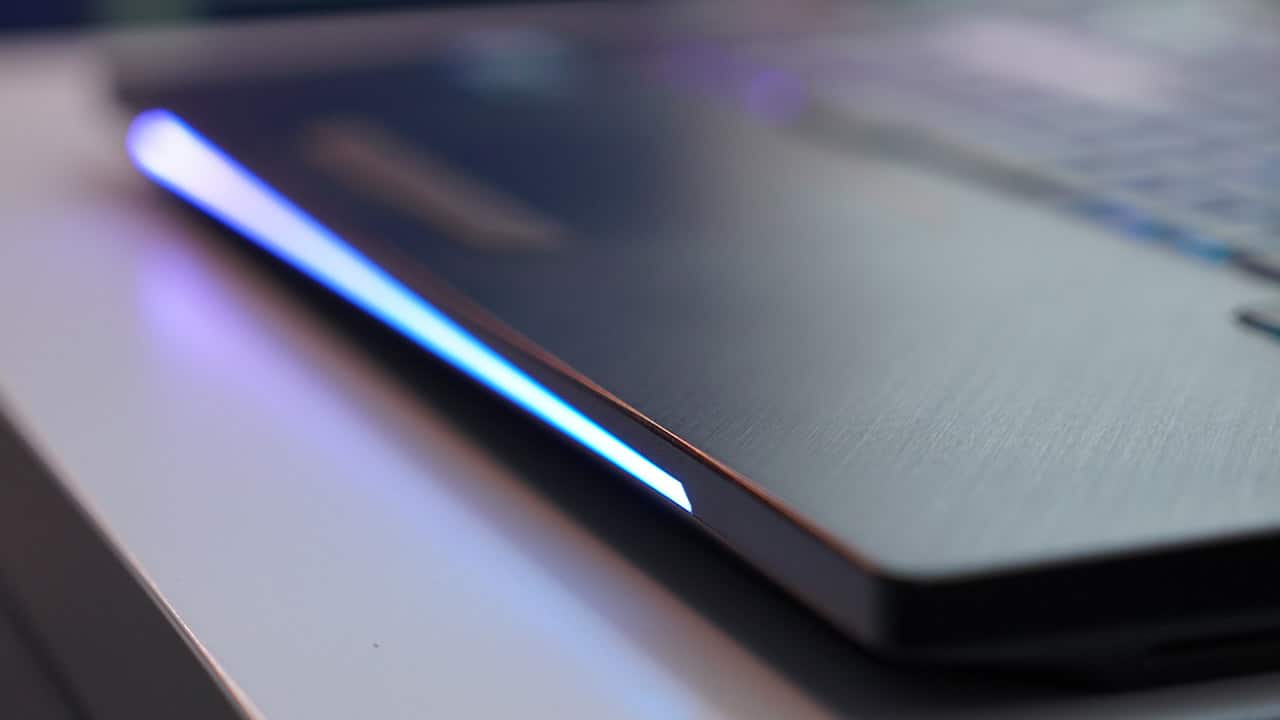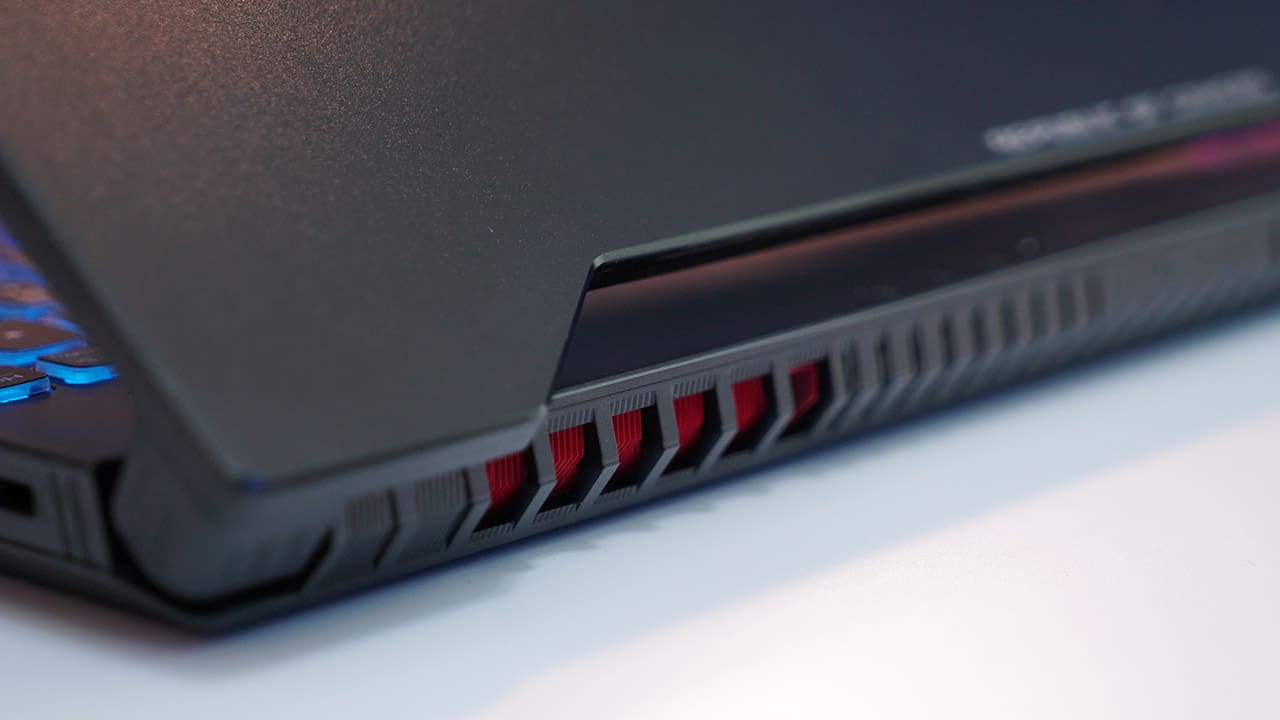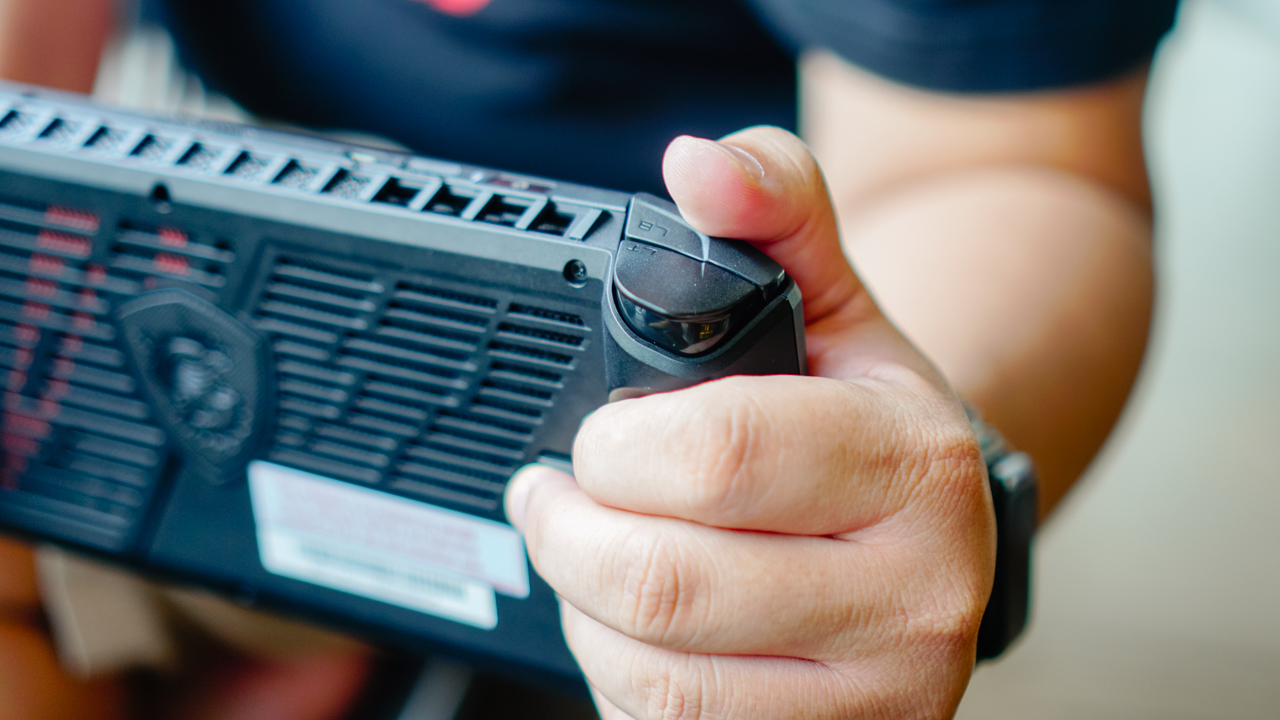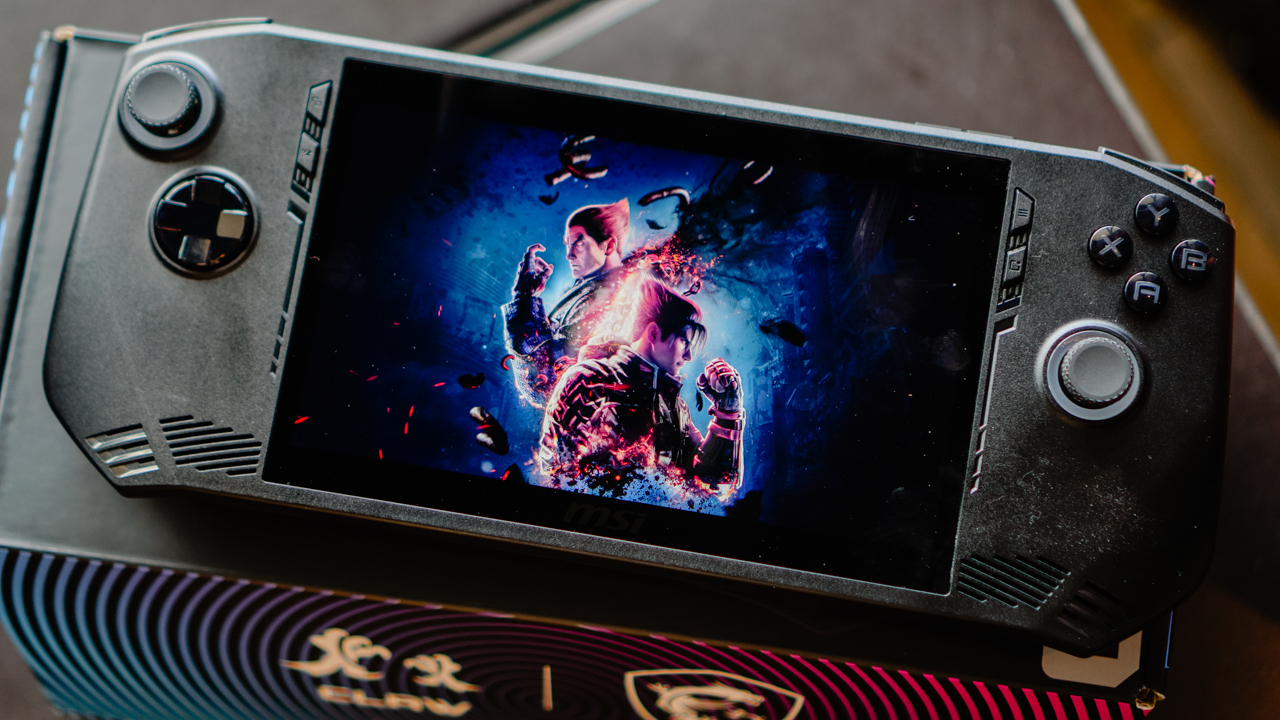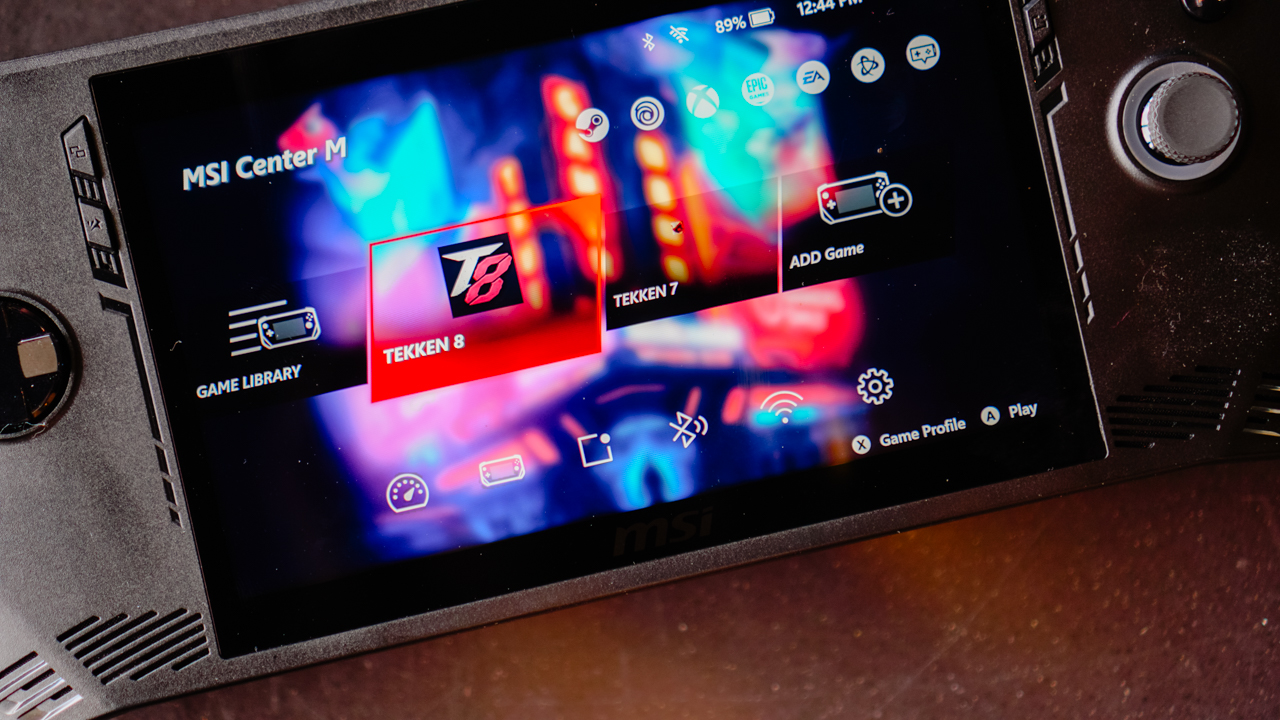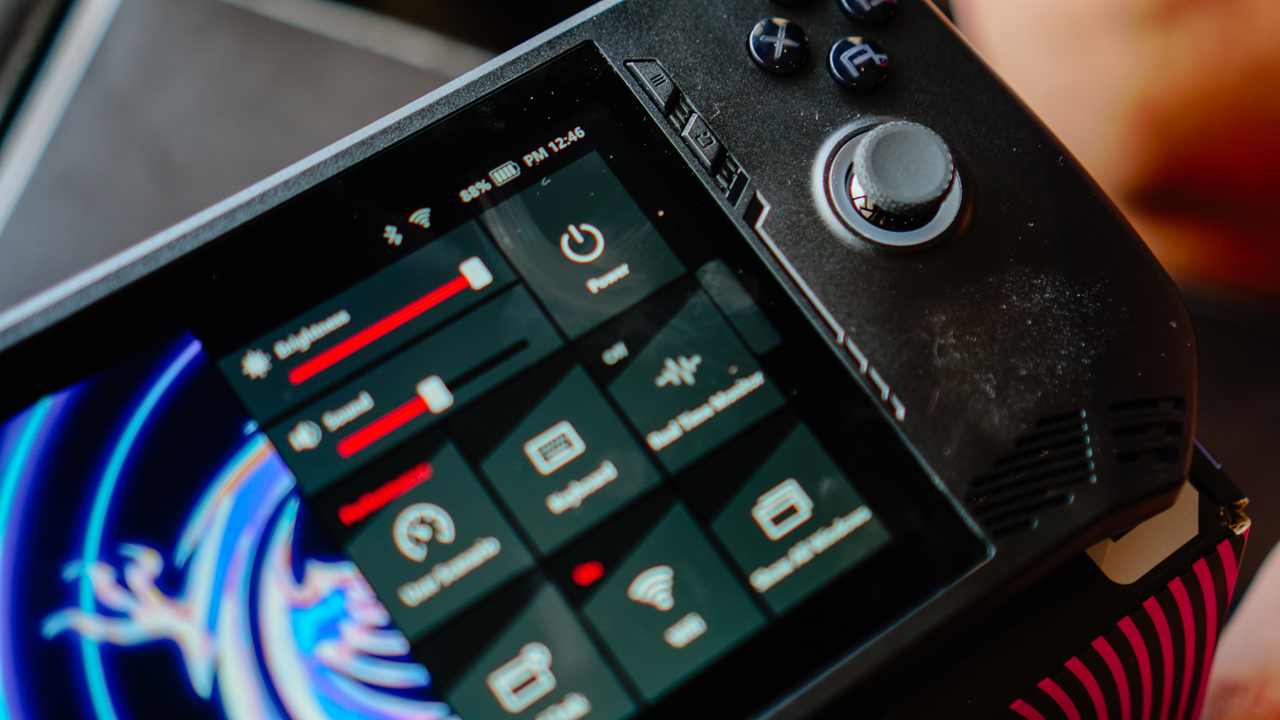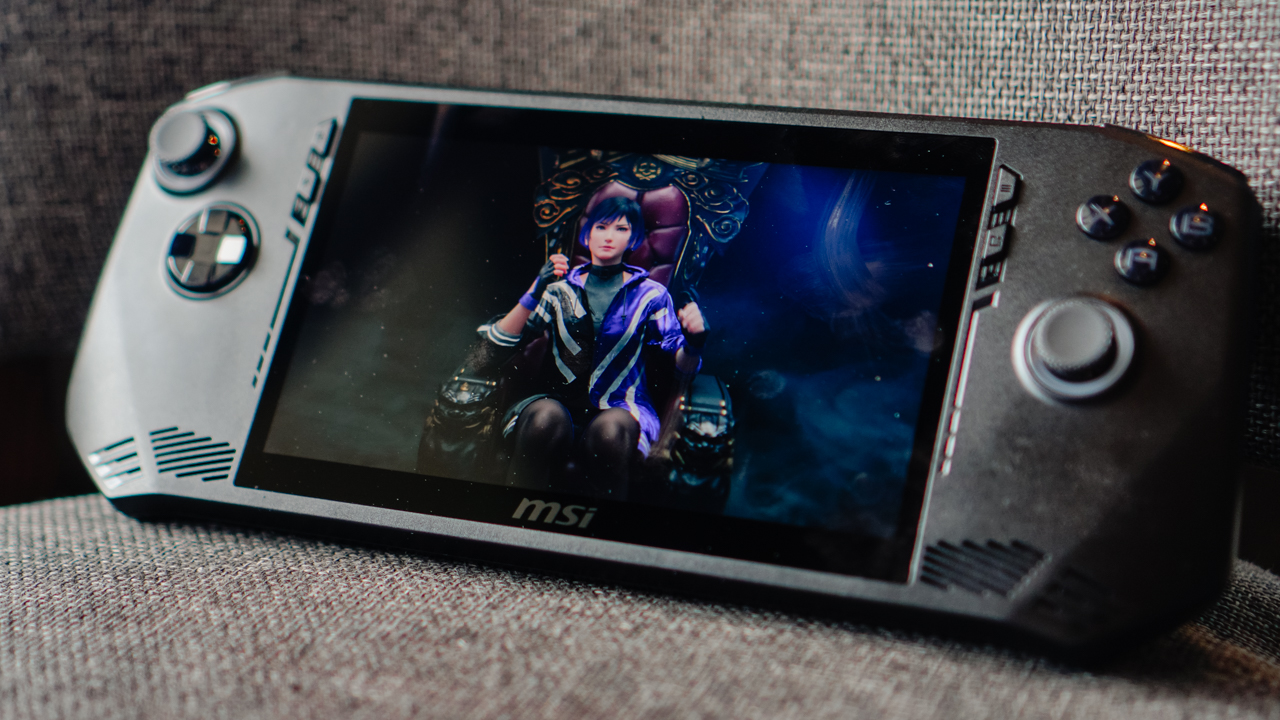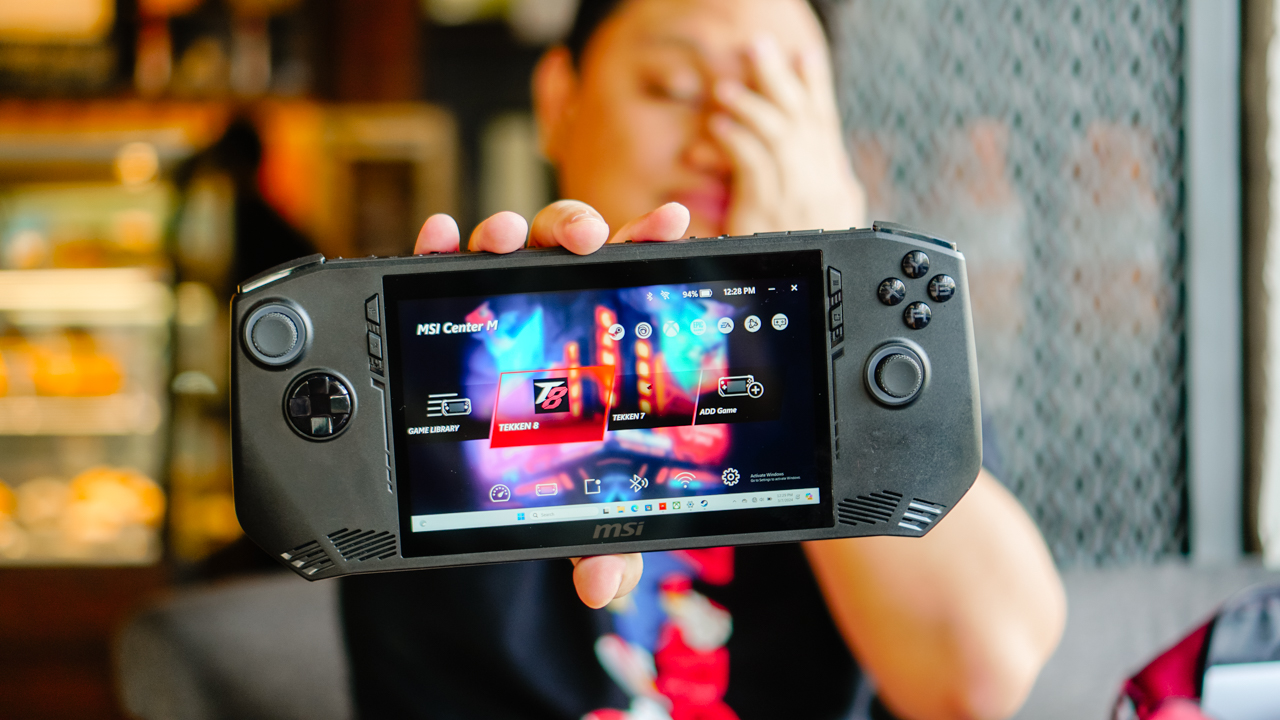
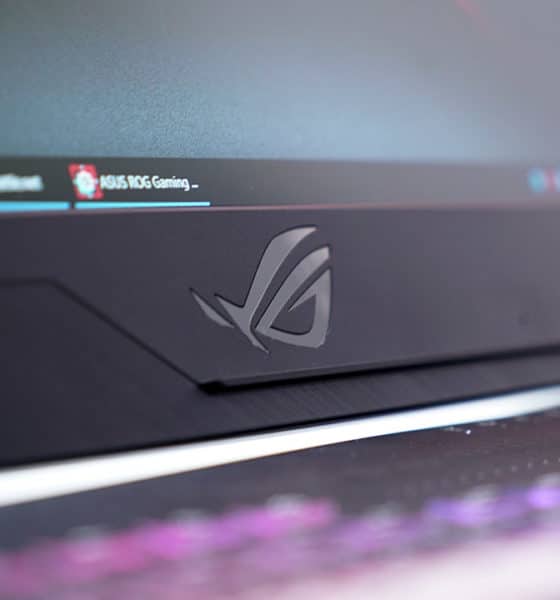
ASUS had a grand appearance at Computex two months ago, mainly because the ROG Phone stole the show. But that wasn’t the only hero product the Taiwanese brand had up its sleeve.
The ROG Strix Scar II and Hero II, which are successors to the popular Strix line of gaming laptops, shared the spotlight, as well. I had the privilege of going hands-on with the Scar II and was largely impressed by its aggressive design and balanced features. Missing, however, was the Hero II.
Although the Hero II is mostly identical to the Scar II, its primary difference is the audience it caters to: MOBA (multiplayer online battle arena) gamers. Those who enjoy titles such as League of Legends and Dota 2 are more inclined to go for this variant over the Scar II, which is targeted more towards fans of Overwatch and Call of Duty.
Truth be told, there isn’t much to compare aside from a set of keyboard adjustments and certain specs (the Scar II can be equipped with a GTX 1070 while the Hero II settles for a GTX 1060), and if you’ve read my initial impressions of the Scar II, you’ll have a good idea of what to expect from the Hero II, which is finally in my hands.
It comes with a 15.6-inch 1080p IPS display
Bezels are kept to a minimum on the sides and top
But that moves the webcam to the bottom bezel
The keyboard has good travel and RGB lighting
And the QWER keys are more prominent for MOBA games
Even the bundled mouse has its own RGB lighting
There’s additional lighting below the trackpad
And the ROG logo’s color syncs with the rest of the laptop
These are the ports on the left side
And these are found on the right
You’ll only find exhaust vents on the rear
How well does it perform?
If there’s one thing you can rely on with this machine, it’s the hardware. From the 8th-generation Core i7-8750H processor with six cores and Hyper-Threading to the full-powered GeForce GTX 1060 graphics chip, the Hero II is equipped to compete.
And you shouldn’t expect anything less specs-wise, because you need all the power you can get to maximize the high-caliber 144Hz panel. The display, by the way, doesn’t come with NVIDIA’s proprietary G-Sync tech to prevent tearing and stutters at certain frame rates, so it’s all on the components to keep things running smoothly.
My setup also comes with 16GB of memory and a speedy 128GB SSD + 1TB SSHD, making this as complete as you’d expect out of a US$ 2,000 mobile rig.
It goes without saying that the Hero II can handle the latest AAA games on medium to high graphics settings, though hitting 144fps may be a struggle on some titles. Not that hovering between 80 to 100 frames per second is bad, but it’s a shame that you can’t make full use of the super-fast panel.
Here are a few benchmark numbers to give you a better idea:
- Unigine Superposition (1080p Extreme, DirectX): 2097 points, 15.69fps (Average)
- Cinebench R15: 1193 (CPU), 94.48fps (OpenGL)
- Rise of the Tomb Raider (Very High settings, DirectX 12): 64.47fps (Average)
- Deus Ex: Mankind Divided (Ultra settings, DirectX 12): 34.9fps (Average)
Can it stay cool?
ASUS made sure to equip both Strix II laptops with sufficient cooling to prevent the mobile components from melting on your desk. Its system is called HyperCool Pro, and it includes two 12V fans with the ability to boost them using built-in software.
As for actual temperatures, the CPU would hit 81 degrees Celsius under the heaviest of loads. At the same time, the GPU goes as high as 71 degrees Celsius in the same conditions. While these are fine for air cooling standards, the fans do get a bit loud when being pushed too hard.
You can choose between Silent, Balanced, and Overboost for the fans — the third one is obviously the loudest. And even though the system’s fans are relatively quiet while the system is idle, I don’t appreciate the placement of the rightmost fan, which hits my mouse-using hand. Laptops normally position this to the left where hot air shoots away from the user.
On the bright side, using it on your lap is pleasant. At 2.4kg in weight, it’s not that heavy and doesn’t get warm enough to cause discomfort underneath.
Does it last long enough away from a wall?
This is probably the biggest fault of this Strix generation. For the thickness the Hero II brings to my lap, I would’ve expected much better battery endurance on a full charge.
Even without touching a single game and using the Hero II purely for surfing the web and watching a few videos on Netflix and YouTube, it rarely lasts over three hours. This is after bringing the laptop’s battery to 100 percent and lowering the screen’s brightness to 50 percent.
That’s disappointing by any laptop standard (unless you count the monsters we used in the past), although the Hero II obviously isn’t meant for non-gaming use on the go in the first place. Keep it plugged in and find another laptop to take on work trips — problem solved.
What else is there to know?
Battery life aside, the Hero II is a surprisingly good multimedia device because of the loud and clear stereo speakers. They’re positioned to the sides unlike the usual bottom-firing speakers, and have strong bass even though they output only 3.5 watts of power. Coupled with the thin bezels and color-accurate panel, watching movies on this laptop is a great alternative to just gaming on it.
This Strix also features multi-antenna Wi-Fi for better wireless internet connectivity. I tried this out in different locations with varying degrees of distance from routers, and I’ve been impressed with the range. The Hero II picks up signals flawlessly, so I don’t have to rely so heavily on the Ethernet port.
Is this your GadgetMatch?
The Hero II wins for two reasons alone: its super-slim bezels around the fast display and well-rounded specs. I can’t get enough of the color-accurate panel and the lack of distractions around it, while the 8th-generation processor and desktop-grade graphics provide all the power needed for competitive gaming.
There are only a few drawbacks here, namely the overbearing thickness for a midrange setup and horrible webcam placement. I also wish the fans were positioned better, but at least they keep the system well cooled.
My other critique is about the way ASUS treats this Strix generation. I honestly would’ve preferred ASUS keeping the Strix II branding sans the Hero and Scar variants. MOBA gamers play FPS (first-person shooter) games too, and vice versa.
The Hero II configuration I got to review retails for around US$ 2,000, but that can easily change with some component tweaks, such as going for a slower Core i5 processor and taking in less RAM. No matter what, however, the solid physique and sleek design come along for the ride.

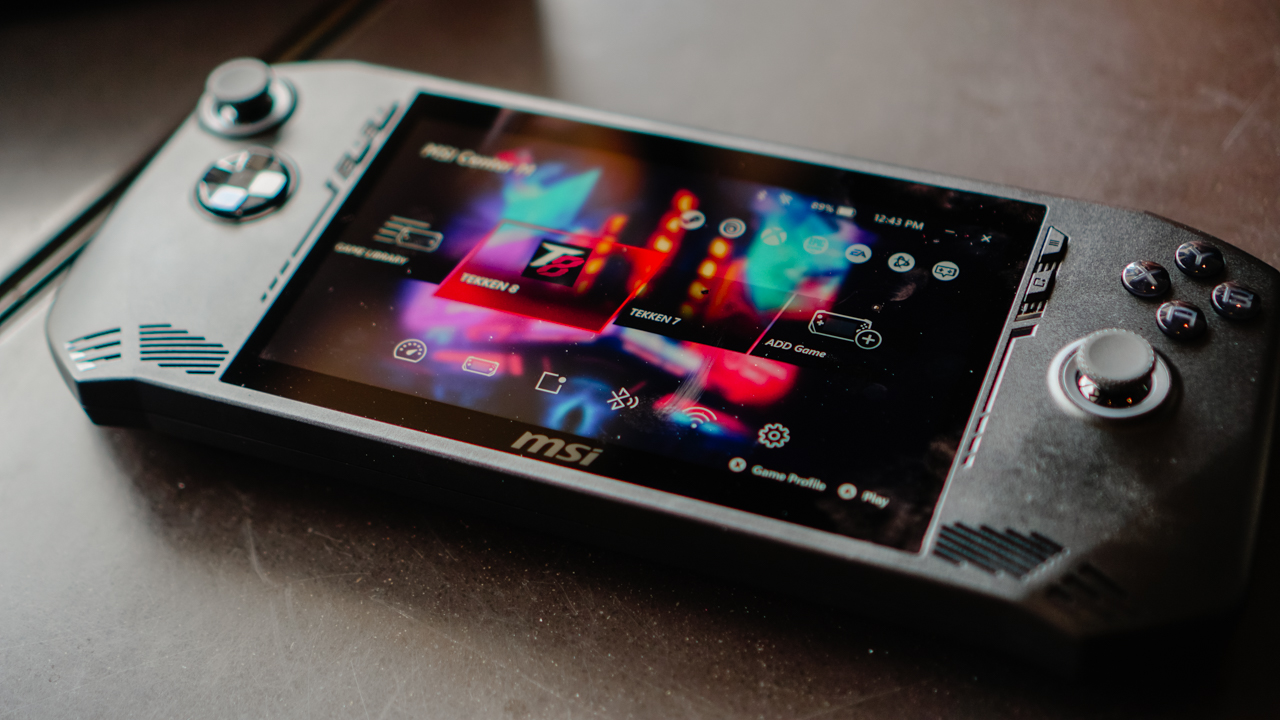
The MSI Claw is the latest gaming handheld from a major PC and laptop brand. The competition in this emerging gadget segment is tighter than ever. So, what is it about the MSI Claw that can scratch your gaming itch? Here’s a quick list.
Best grip in the game
One quick glance and it’s hard not to compare the claw with another popular gaming handheld. But a closer look and actually holding the thing will reveal that its grip easily feels better.
It has a slightly deeper groove that makes it easier to hold. So, MSI’s “Grip and Game” tagline isn’t all talk. Its design truly does provide one of the better feeling handles among its competition.
The overall design makes sure it’s made for extended gameplay sessions. The buttons are where you expect them to be. That includes the four mini buttons on the upper edges of the screen. These are the View, MSI Center M, Menu, and Quick Settings buttons.
In addition, the face buttons and d-pad all feel great. The face buttons, in particular, feel comparable to those of regular console controllers.
The rest of the buttons and triggers have a very satisfying tactile feel. It also uses Hall Effect technology to get rid of any stick drift issues.
Up top, you’ll find the power button, MicroSD Card slot, Thunderbolt 4 USB-C port, audio jack, and the volume buttons. These are intuitively placed and just makes sense given the overall design approach.
As cliché as it sounds, you’ll really think you got your money’s worth once you hold, touch, press, and grip the MSI Claw.
Dragon Vision
Now, MSI isn’t really calling it that but I thought it sounds pretty cool. A big part of the whole gaming experience is the display. Balancing resolution and frame rates is always tricky but the MSI Claw does it convincingly.
With this gaming handheld, you get a 7-inch display with a 120Hz refresh rate. Looks great on paper and it’s even better in real life. It’s the sweet spot in terms of both size and performance. There’s enough here to immerse you all while delivering a satisfying level of crisp and smoothness.
It’s comfortable to view whether you’re on the couch, on a desk table, or lying down getting a quick game in before you get some shut-eye.
Battery Life
At 53Whr, the MSI Claw has a 36% larger battery capacity than its contemporaries and promises 50% more play time.
MSI claims “elevated performance with extended endurance” using the Claw with faster charging capabilities.
These percentages are hard to measure in real life usage. What we can say for certain is that you get the expected performance and playtime typical of a handheld. That’s a little under two hours for graphically demanding titles, and close to four hours on less demanding ones.
The charging claim is legitimate. The MSI Claw juices up faster than most other handhelds, going from 20% to 100% in about a little over a K-Drama episode (roughly a little over an hour).
MSI Center M
Any self-respecting gaming handheld has its own software to make navigating the thing more manageable. While its direct competitors have an armoury crate and a space, MSI went with Center M.
The best part about MSI Center M is it puts your installed games front and center. Right when it launches, you get immediate access to the titles you have available on your machine.
MSI Afterburner is already the most commonly used app for taking a look at how your machine is performing while you play. That functionality is built-in to the MSI Claw. You can access it view the Quick Settings buttons.
Layout and functionality-wise, the MSI Center M is certainly one of the better Gaming Handheld softwares available right now.
Competitive Performance
A defining trait of the MSI Claw is that It’s the first gaming handheld to be powered by Intel Core Ultra. With it comes Intel XeSS tech. What it does is leverage AI upscaling to boost the fps of select titles.
As of launch, 50 notable games are supported. That number will certainly grow throughout the device’s lifespan. Some of the titles include Hi-Fi Rush, Dying Light 2, Forza Horizon 5, Call of Duty Warzone 2.0, Returnal, and many, many more.
Naturally, results will vary depending on the game mode you’re using. But in general, AAA games get anywhere between 10% to 45% better frame rate performance with Intel XeSS.
For our part we played TEKKEN 8 and the recently launched Horizon Forbidden West. Both graphically demanding games played relatively well on the MSI Claw. Frame rate performance on TEKKEN 8 is crucial and we got a relatively consistent fps, never dropping below 40.
Horizon Forbidden West is a much more graphically demanding game. We were able to run it in Medium Settings and while it doesn’t look as incredible, it still played relatively well with a frame rate surprising for a gaming handheld.
Extras
MSI made sure that if you wanted to, you could get some extra stuff with the MSI Claw. Its separately sold accessory set includes the Claw Travel Case, Nest Docking Station, Claw Lanyard, and Claw Keychain.
On paper, the MSI Claw lists its ergonomic design, AI Engine, and App Player as distinct advantages over its competition.
Whether it’s the Gaming Handheld that matches your needs is still ultimately up to you. If you have the opportunity to test drive the device, we suggest you do so. That might just solidify your purchase decision.
Price and availability in the Philippines
The MSI Claw will be available in three configurations in the Philippines. There are priced as follows:
MSI Claw A1M-075PH (PhP 45, 995).
- Intel® Core™ Ultra 5 processor 135H
- 512GB NVMe PCIe Gen4x4
- LPDDR5 16GB, dual channel
- Intel® Arc™ Graphics
Claw A1M-076PH (PhP 50, 995).
- Intel® Core™ Ultra 7 processor 155H
- 512GB NVMe PCIe Gen4x4
- LPDDR5 16GB, dual channel
- Intel® Arc™ Graphics
Claw A1M-077PH (PhP 53, 995).
- Intel® Core™ Ultra 7 processor 155H
- 1TB NVMe PCIe Gen4x4
- LPDDR5 16GB, dual channel
- Intel® Arc™ Graphics
Ongoing Promotion
You can still get your own MSI Claw with exclusive bundled freebies 𝐄𝐗𝐓𝐄𝐍𝐃 until 𝐀𝐩𝐫𝐢𝐥 𝟑𝟎, 𝟐𝟎𝟐𝟒!
This feature article is a collaboration between GadgetMatch and MSI Philippines.

If you’ve been waiting for an opportunity to try Assassin’s Creed Mirage, that opportunity has come. The game is available for free trial on the PS5, PS4, Xbox Series X|S, Xbox One, Windows PC, Ubisoft Store, and the Epic Games Store. The promotion will be available from April 17 to 30.
During the Free Trial, players will have access to the first two (2) hours of the. Progression will carry over if they purchase the game.
Players streaming will be able to get and offer to their viewers an exclusive reward: Basim Valhalla Sword, if they stream during the Free Trial period. This unique sword is Basim’s weapon from his later years in England.
Discounts will also be available on PC via Ubisoft Connect only. From April 17t to 24 , Assassin’s Creed Mirage Standard Edition and Deluxe Edition will be 40% off.
Assassin’s Creed Mirage
Assassin’s Creed Mirage spins a tale centered around an already established character, rather than a blank slate like Valhalla’s Eivor. It follows Basim Ibn Ishaq, a character introduced in Valhalla. Taking place before the events of the previous game, Mirage has the assassin root out the Order in 9th-century Baghdad, a setting familiar to those who played the original title in 2007.
SEE ALSO: Assassin’s Creed Mirage review
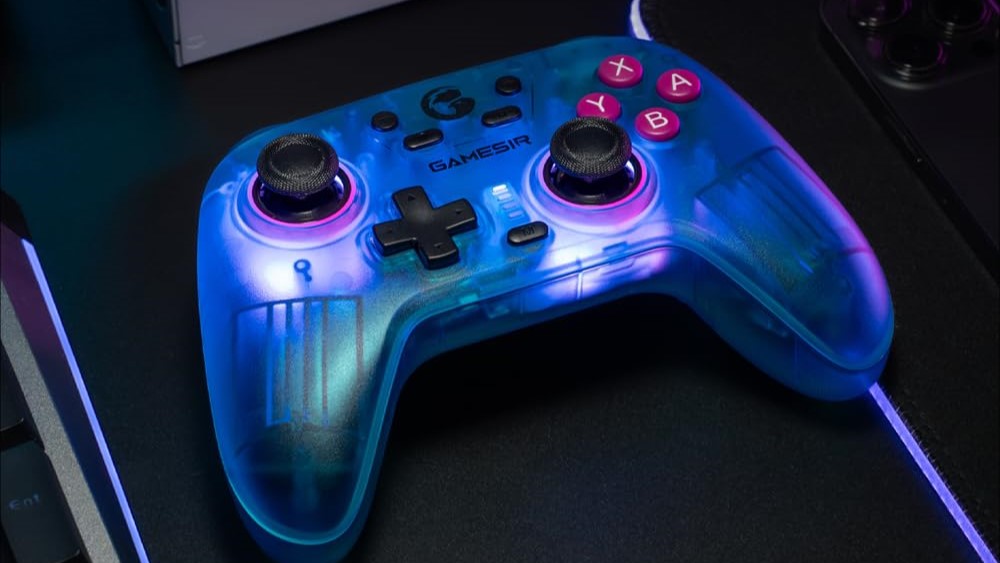
Gaming peripherals brand GameSir has introduced two new budget-friendly gaming controllers: The GameSir Nova and GameSir Nova Lite.
These controllers feature multi-platform compatibility and cutting-edge technologies, like anti-drift Hall effect sticks and tri-mode connectivity, for affordable price points.
The GameSir Nova is available for UK£ 39.99/US$ 35.99/PhP 2,100 while the GameSir Nova Lite costs UK£ 29.99/US$ 24.99/PhP 1,500.
Color options for the Nova are Neon Teal and Retro White, while the Nova Lite comes in Stellar White and Space Purple. Customers may purchase from Amazon, Amazon UK, and the GameSir website.
Ultimate multi-platform gaming controller
The GameSir Nova and Nova Lite are both compatible with multiple devices, including PC, iOS, Android, and Switch. The Nova Lite, meanwhile, can also connect to Steam Deck.
Both controllers also support tri-mode connectivity for flexibility. The Nova can be connected via Bluetooth, 2.4GHz, or a wired connection. Its Lite counterpart supports Bluetooth, a wireless dongle, and a wired configuration.
Precise, consistent gaming
With anti-drift Hall effect sticks, the Nova provides a smooth and consistent gaming experience. It uses specially optimized algorithms, and even supports motion controls to tilt, shake, or rotate for more immersion.
The Dual HD Rumble Motors in the grips also provide vibrations for real and precise feedback, whatever the game’s effects may be. Furthermore, there are two programmable macro back buttons that allows gamers to execute complex combos with ease.
The Nova Lite, meanwhile, also has analogue triggers, a 20Hz Turbo function, and two motors in the grips to cater to the user’s needs and feel.
In addition, the Lite includes a multi-function M button. Users may use this button to adjust different settings on the fly. For instance, pressing M plus the D-pad’s up and down buttons raises or lowers the vibration intensity. The sticks’ dead zones may also be adjusted to one’s liking.
-

 Accessories2 weeks ago
Accessories2 weeks agoApple Vision Pro Review: Two Months Later
-

 Features5 days ago
Features5 days agoFortify your home office or business setup with these devices
-
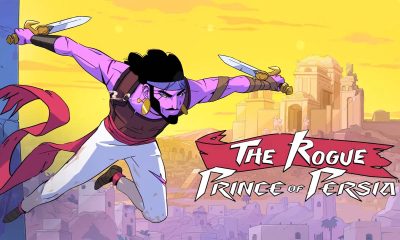
 Gaming1 week ago
Gaming1 week agoThe Rogue Prince of Persia looks like an ultra-colorful roguelite
-

 Philippines2 weeks ago
Philippines2 weeks agovivo Y100 to release in Philippines on April 27
-

 Gaming1 week ago
Gaming1 week agoStar Wars Outlaws release date revealed
-

 Events1 week ago
Events1 week agoStellar Blade: PlayStation taps cosplayers to play Eve for game’s launch
-

 Accessories1 week ago
Accessories1 week agoLogitech unveils G Pro X 60 gaming keyboard: Price, details
-

 Deals2 weeks ago
Deals2 weeks agoSamsung Awesome April: Deals on Galaxy A series

